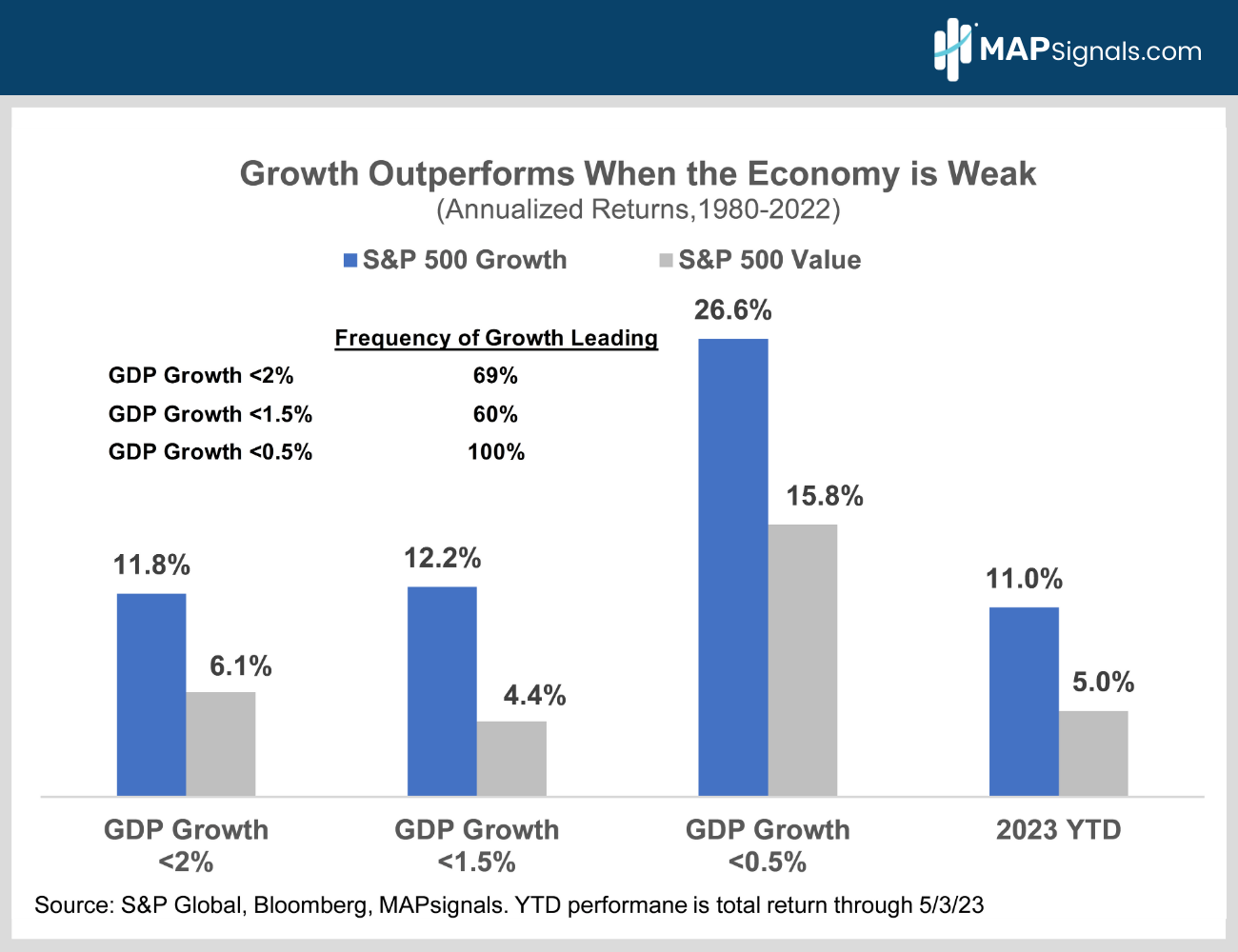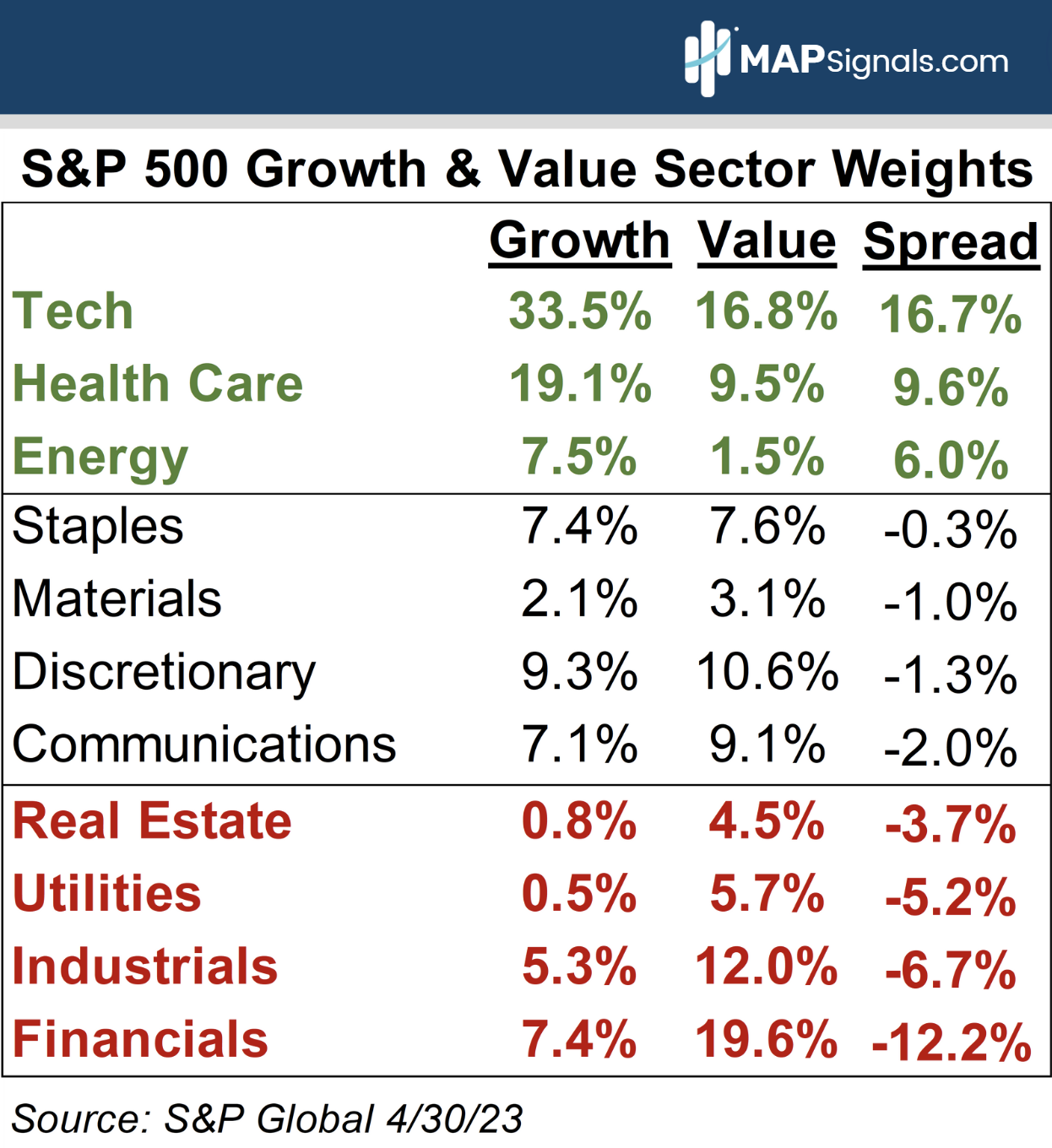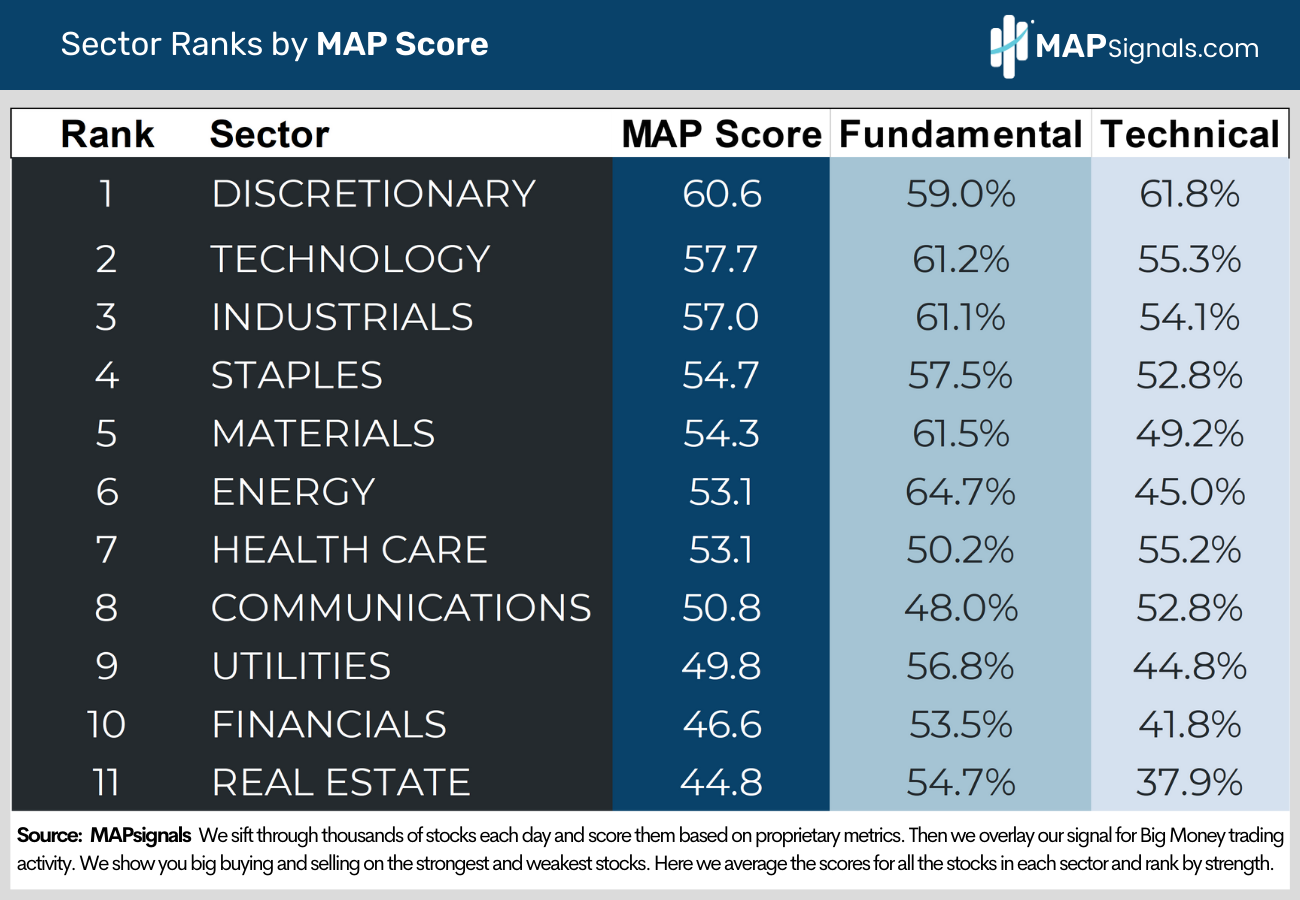
Growth Stocks Still Have Legs
by ,Growth stocks have crushed it this year. The S&P 500 Growth Index is up 11%. Technology and discretionary, MAPsignals’ two highest ranked sectors, have led the way.
But with recession worries still swirling, many worry the rally can’t last. Based on historical data, growth stocks still have legs to run.
Today I’ll show you why the growth theme can keep working. Then I’ll show you how to play it with leading style and sector ETFs.
Growth Stocks Still Have Legs
Let’s breakdown 5 themes that are feathers in the growth-tilted bull camp.
- Fed tightening has cooled inflation but it’s also slowing the economy. Meanwhile, the timing of Fed rate cuts remains murky. That, coupled with tightening credit from ongoing regional bank stress, has recession worries topping investors’ worry list.
- The Bloomberg consensus forecasts only 1.2% 2023 US real GDP growth and a scant 0.8% in 2024.
- When growth is scarce, investors pay up for it. Since 1980, growth has always outperformed value when US real GDP growth has been sub 2%. Most importantly, growth stocks posted their strongest gains when US real GDP growth has been below 0.5% (chart).
- Reasonable Valuation: The S&P 500 Growth Index trades at 26% premium to the S&P 500 Value Index, roughly in line with its 22% 20-year average valuation premium.
- Value stocks are very economically sensitive. Value tends to lead early in the economic cycle, coming out of a recession when growth is re-accelerating. With growth slowing and recession fears heightened, it’s still too early to overweight value.
The following chart shows how growth outperforms when the economy is weak:

The lower the growth rate, the more growth outperforms.
Sectors For Growth Overweight
Let’s dig deeper. Analyzing the sector composition of the S&P 500 Growth and Value indices is a great way to game out which is best positioned to outperform going forward.
Let’s zero in on the biggest differences in the two indices’ sector make-ups (table). Tech really jumps out.
The S&P 500 Growth Index has a huge 34% weighting to tech – that’s double the 17% exposure of the value index.
Next, check out health care. It represents 19% of the growth bucket, double value’s 9.5%. Energy is the other big overweight in the growth index at 7% vs. less than 2% in value.
On the flip side, check out growth’s big underweights relative to value. Financials really jump out here at a skimpy 7% vs. 20% in the value index. Industrials, utilities, and real estate round out growth’s other big underweights compared to value.

OK but what does all this mean for style leadership moving forward?
Growth’s sector DNA bodes well for future outperformance. Here’s why.
In an uncertain macro environment, investors want high-quality, dependable organic growth that can outshine a sluggish economy.
The Growth Index has that in spades with a combined 44% weighting to mega cap, blue-chip tech and discretionary stocks like Apple, Microsoft, Nvidia, Home Depot, Starbucks, Nike and Amazon. It doesn’t hurt that these two sectors also have the highest MAP Scores (table).
Growth’s big overweight to health care is another plus. After a slow start to the year, health care has been outperforming since March as investors increasingly favor dependable growth at a reasonable price.
Growth’s big overweight to energy is also bullish. With WTI oil now down in the $60s on relentless recession fears, the sector is the cheapest in the market, trading at only 10X 12-month forward EPS.
Throw in a 4% dividend yield and the likelihood of an eventual oil rebound on the back of improving Chinese demand, additional OPEC+ supply cuts and the eventual refilling of the Strategic Petroleum Reserve by the Biden Administration, and energy sports a great intermediate-term risk-reward profile.
Lastly, growth’s super-low 8% combined exposure to underperforming cyclical sectors with low MAP Scores like financials, real estate, and utilities bodes well for continued leadership. Growth stocks still have legs!

How to Play It
The easiest way to get exposure to large cap growth stocks is with the State Street S&P 500 Growth ETF, SPYG. It’s the leading style ETF with $7B in assets.
SPYG sports a top-notch MAP Score of 68, reflecting big tech and discretionary exposures and low weightings to lagging sectors with low MAP Scores like financials, real estate, and utilities. It’s worth noting, SPYV, the State Street S&P 500 Value ETF, has a notably lower MAP Score of only 59.
As you can imagine, many of the stocks in SPYG are under healthy accumulation and for many months.
Bringing It All Together
Growth stocks have been winning big. We think they’ll continue to outperform in an uncertain macro environment.
Fed tightening has cooled inflation but it’s also slowing growth. And visibility on when the Fed begins easing remains murky. That, coupled with tightening credit from ongoing regional bank stress, has recession worries on the front burner. All this is pushing investors into high quality, dependable growth stocks that can outgrow a weak economy.
When growth is scarce it becomes more valuable. Even after 2023’s strong start, growth stocks still have legs to run.
Our Top 20 list is full of leading stocks. There’s a major bull market under the surface. You just need a map to navigate!
If you’re a serious investor and want to crank up your growth stock selection, get started with a MAPsignals subscription today.
Invest well,
-Alec

